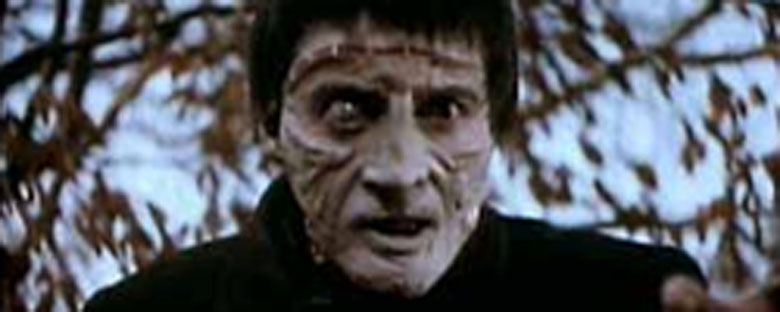Reviews
Terence Fisher
UK, 1957
Credits
Review by Leo Goldsmith
Posted on 12 October 2005
Source Warner Brothers DVD
Related articles
Features: 31 Days of Horror
Reviews: Frankenstein
Reviews: Bride of Frankenstein
Reviews: Flesh for Frankenstein
Reviews: Re-Animator
Mary Shelley’s “modern Prometheus” never reveals his secret for the reanimation of dead tissue. Frankenstein tells his confidante, the polar explorer Robert Walton, only that he assembled the creature’s body from limbs and organs he found in charnel houses and graveyards, but leaves the particularity of the process of revivification obscure. While nearly all adaptations of Shelley’s work present various realizations of the doctor’s technological process (the chains and coils of Whale’s watchtower in the 1931 Frankenstein form the prototype), it is the process of assemblage that is the most crucial to the story.
Frankenstein is not content to simply bring living things back to life, but rather desires to create life anew. In The Curse of Frankenstein, the first of Hammer Films’ variations on the classic, Victor and his mentor, Paul Krempe, successfully revive a cute puppy from the dead. But this is not enough for the ambitious Victor. “We’ve restored life where life was extinct,” he tells Paul. “It’s no longer sufficient to bring the dead back to life. We must create from the beginning; we must build our own creature. Build it up from nothing… Forget the whole; now we must take the parts — limbs, organs — and then we must build!”
What Peter Cushing, in his seminal turn as Victor, voices is the tension built into the deep structure of the Frankenstein story: the Monster’s ambiguous status as both a “new” creation and an assemblage of parts. Victor’s goal is to create a perfect human from a variety of sources: the hands of a master sculptor from Leipzig, a pair of fresh eyes (that have not yet been pecked out by birds) from the local charnel house, and the (surreptitiously acquired) brain of a genius. The Creature is a pastiche, a collage; in surrealist terms, he is the most exquisite of corpses. But of course, as the surrealists knew, collage is a medium of chance. In assembling these diverse elements into a newly constructed whole, the phantom will of the individual parts returns to haunt Frankenstein’s creation. It is the ghost in the reanimated machine, and it inevitably spells evil for its arrogant creator and all of those around him.
It is therefore fitting that Hammer’s inaugural Frankenstein film should focus so much of its attention on this process of construction. As one of the many permutations of the Frankenstein tale — a hybrid of the novel, the earlier film adaptations, a number of stage adaptations, and numerous other related and unrelated sources — The Curse of Frankenstein calls attention to itself as a pastiche like the Monster itself, inspired with the new life of Hammer’s budding venture into the horror genre. So, while most adaptations rush toward the foot-stomping and strangulation, Curse emphasizes the moral and technical quandaries of the Creature’s construction for almost an hour before it lets out its first inarticulate groan.
Even then, Frankenstein’s creation is far less prominent in the film than he is in other adaptations. But used sparingly, the appearance of the Creature is profoundly affecting. Beautifully portrayed by Christopher Lee (in the actor’s only Frankenstein film), the Monster is almost heartbreaking, flailing confusedly with a pained expression on its patchwork face. (Phil Leakey’s makeup work looks rather cheap today, but that just seems to make it more grisly. Cushing tells Paul that “Once the scars on the face heal, it won’t look so bad,” but of course we know better.) And true to the Monster’s collage-like construction, Lee articulates each limb of his body independently, as though every part of the Creature’s figure has a mind of its own. Writing in Monster Zine, Eric M. Heideman has compared Lee’s movements to those of a broken puppet. But Lee’s Monster is frightening precisely because he is more than a puppet. He is a brain-damaged, hodgepodge Pinocchio with an excess of life, on the border of the animate and the inanimate.
We don’t do comments anymore, but you may contact us here or find us on Twitter or Facebook.



